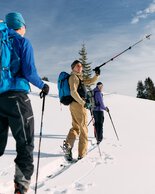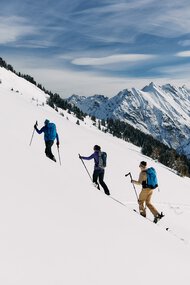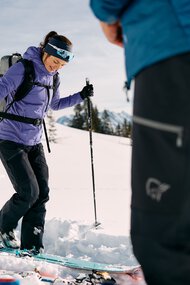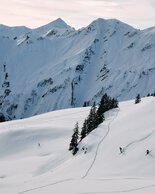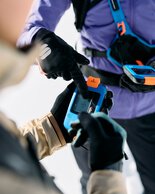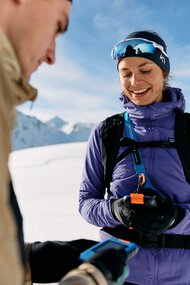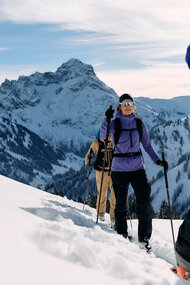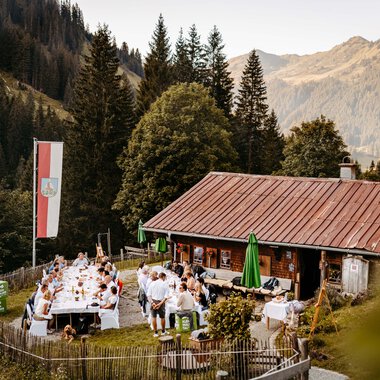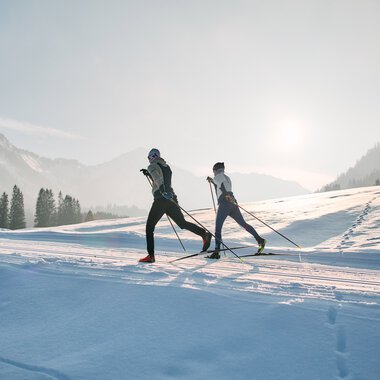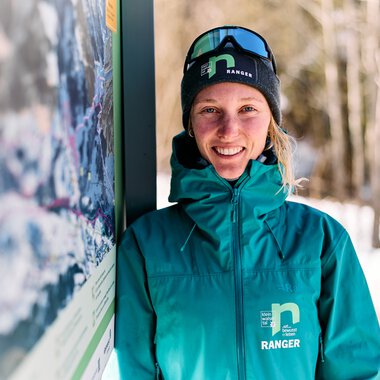Ski touring: tips for safe behavior in the great outdoors
10.11.2023
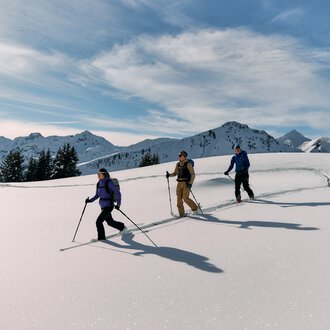
Ski tours have a very special appeal. Making the first tracks of the day, skiing down dusty powder slopes and that indescribable feeling of freedom and vastness. In addition to the outdoor feeling, there are also some risks associated with the sport. When we are out in nature, we are also entering the habitat and retreat of wild animals. Prudent and careful tour planning therefore includes not only studying the avalanche and weather reports, but also knowing about wildlife protection zones to ensure respectful and peaceful coexistence.
choose the right tour
Unforgettable off-piste winter experiences begin with the search for a tour. Aspects such as your own ability and the ability of your companions must be taken into account, as well as the expected weather and snow conditions. It is therefore advisable to remain flexible when looking for a tour and to look at a few alternatives. Planning also includes finding out about conservation zones and protected areas for game and forest. Maps and various tour portals provide information about approved ascent and descent corridors. You are generally well advised to use designated ski tours that take quiet zones and retreat areas into account.
Check avalanche situation and weather
Equipment and material are ready for use, the next tour runs through approved corridors and we are super motivated. Off we go into the untouched winter landscape, right? Beforehand, we need to find out about the avalanche situation, topography and slope on our planned route. Correctly assessing alpine dangers requires a lot of knowledge and experience. Knowledge about snow quality, visibility and temperature plays a vital role in open terrain. Why not learn from a professional and go on tour with an experienced guide?
Always have emergency equipment with you
When we are off-piste, even if it is only a few meters off-piste, a minimum amount of emergency equipment is essential. A ski touring rucksack should not only contain a change of clothes and food, but also a probe, a shovel and a first aid kit as well as an avalanche transceiver system to be worn on the body. Not forgetting, of course, the knowledge of how to use this equipment correctly in an emergency. An avalanche course in advance is highly recommended.
Allow for a time buffer
It can become uncomfortable if the tour takes longer than planned. You should therefore allow for a generous buffer depending on the ability of the weakest group member or possible surprises. We should be safely back at our accommodation by dusk. Not only for our own safety, but also to allow for rest periods for wild animals. Especially in winter, they need all the reserves they can get to hibernate. Disturbances caused by bright headlamps and noise cost wild animals an unnecessary amount of energy, which they need to survive.

